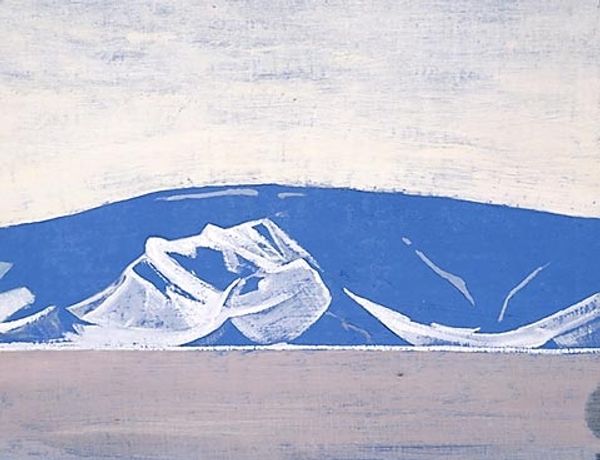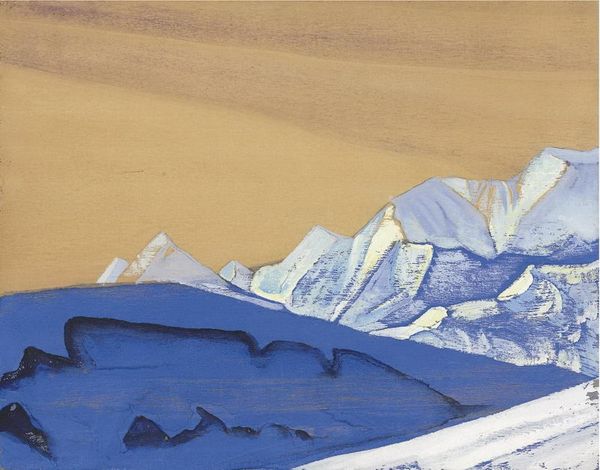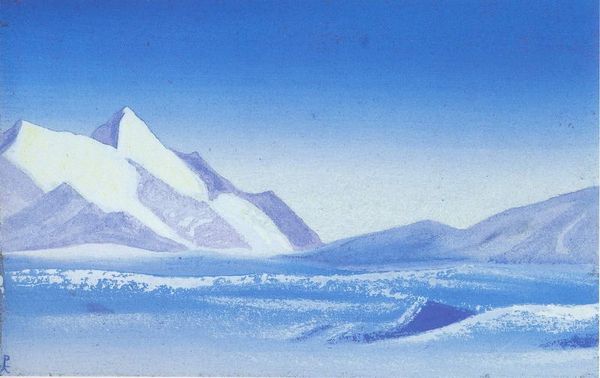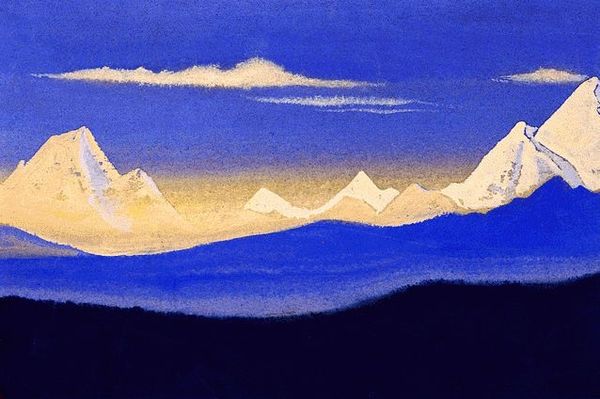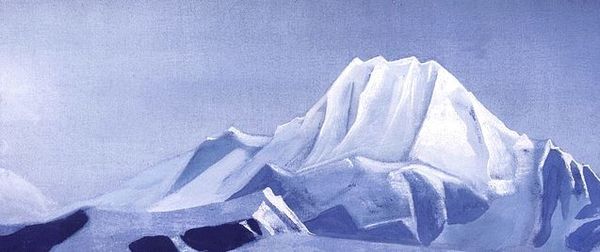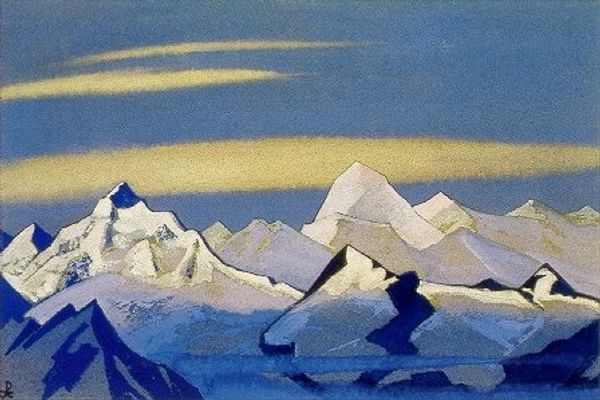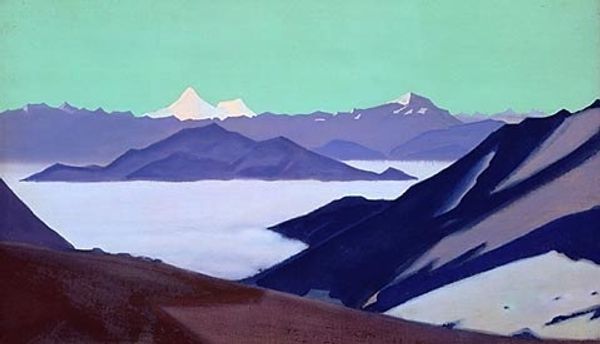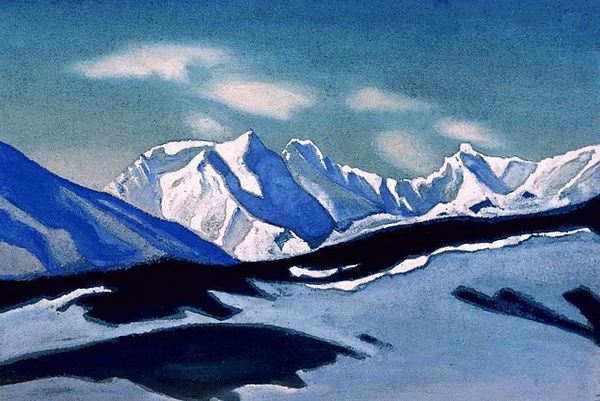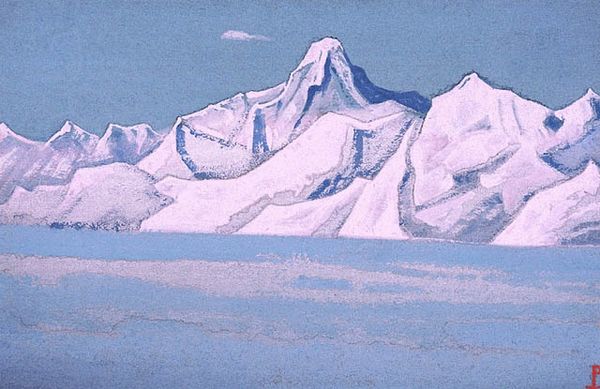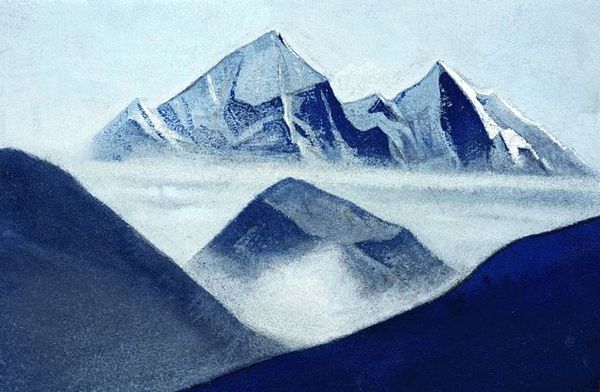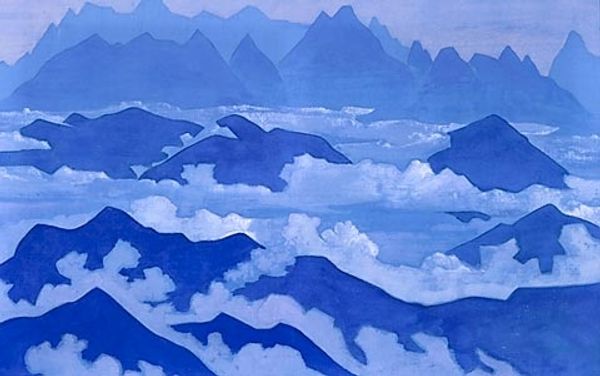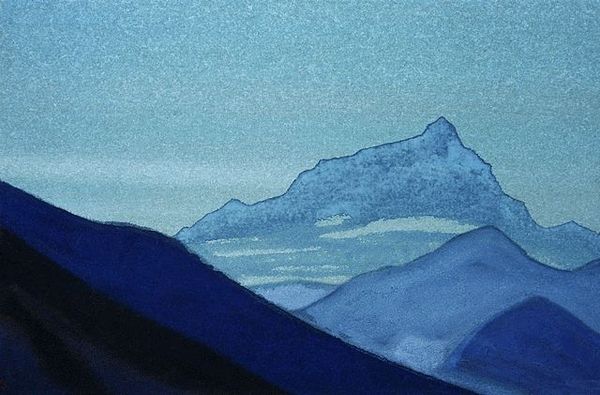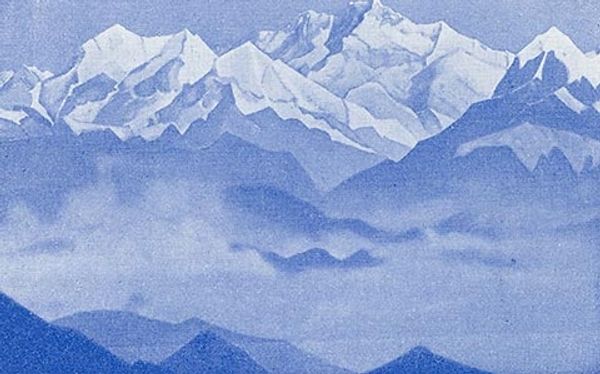
Copyright: Public domain
Editor: So, here we have Nicholas Roerich’s “Chan-Thang. Northern Tibet,” painted in 1939. The composition strikes me with its starkness and the somewhat dreamlike quality of the simplified forms. The tiny figures and tents in the foreground against the immensity of the landscape... What do you see in this piece? Curator: Roerich's work is fascinating when viewed through the lens of cultural diplomacy and the socio-political climate of his time. Roerich, deeply influenced by Theosophy, saw art as a bridge between cultures. What was he attempting to express about Central Asia in the 1930s through his visual representation? How do you think that fits in with the public perception of these regions at the time? Editor: I suppose I had been seeing it more personally - but his expeditions to Central Asia were very politically charged. So perhaps he was trying to portray an idealized version? One that spoke to spiritual harmony rather than political unrest? Curator: Exactly! Roerich wasn't simply depicting the landscape, he was actively constructing an image. And he was deeply embedded in constructing narratives for political gain. Does the palette – that strong, cold blue – reinforce or contradict that reading, in your opinion? What emotions did the choice of the palette bring about? Editor: Well, the cold blues certainly evoke the harshness of the climate. Yet there's also a kind of purity in that blue, reinforcing the spiritual angle we just talked about. Curator: Precisely. It's about understanding art's active role in shaping perceptions, its potent social impact, particularly in sensitive political situations. The interplay of ideology and artistry creates a work far more than simply an aesthetically pleasing view. Editor: That makes me think much more critically about the choices an artist makes, and how they’re always tied to a bigger picture. I appreciate your giving a way to understanding more of this work. Curator: And I find that our perception continues to evolve, as context shifts and our socio-political lenses develop, we find new dialogues opening through pieces like this, continually adding to the depth of the art.
Comments
No comments
Be the first to comment and join the conversation on the ultimate creative platform.
